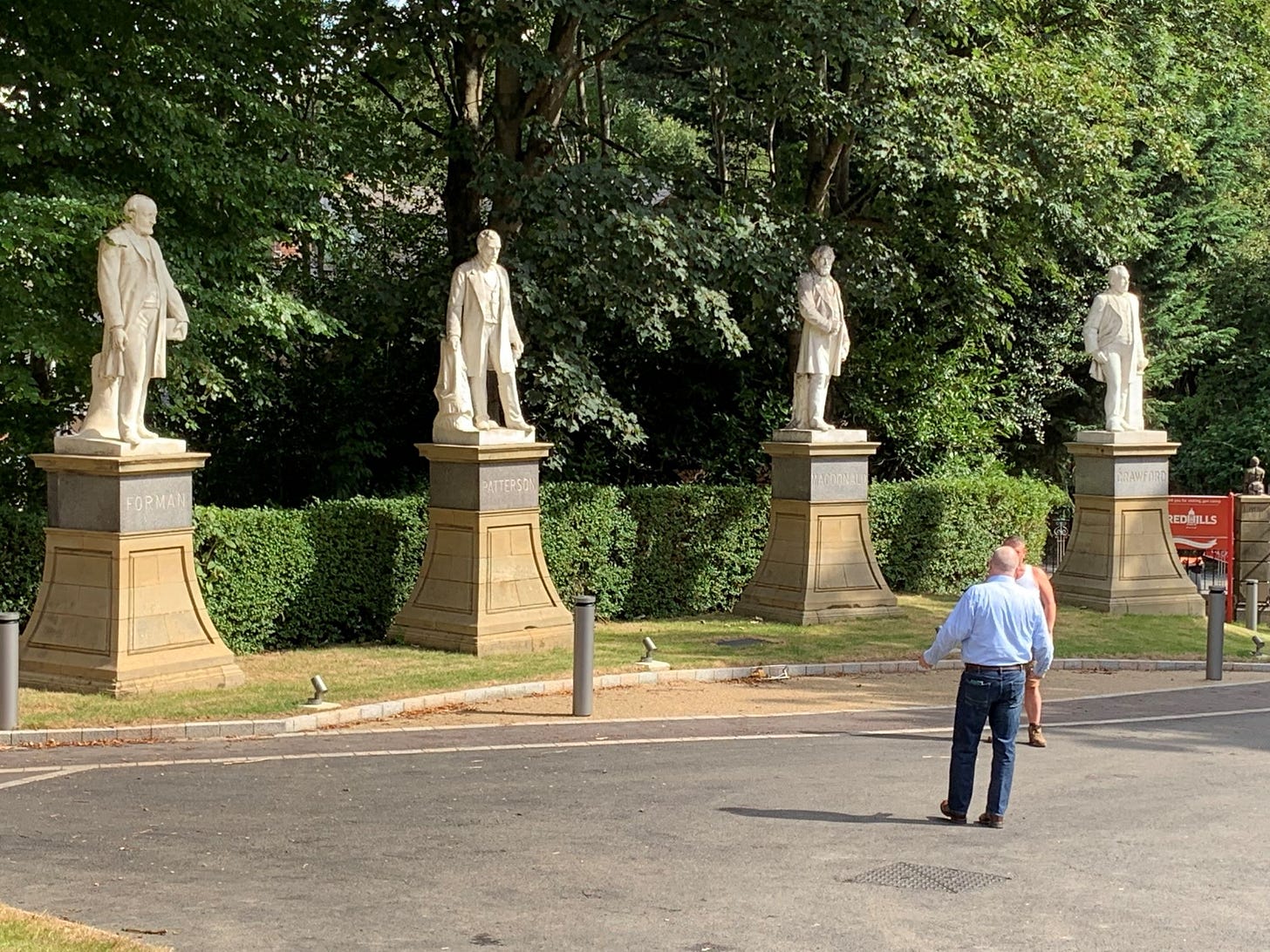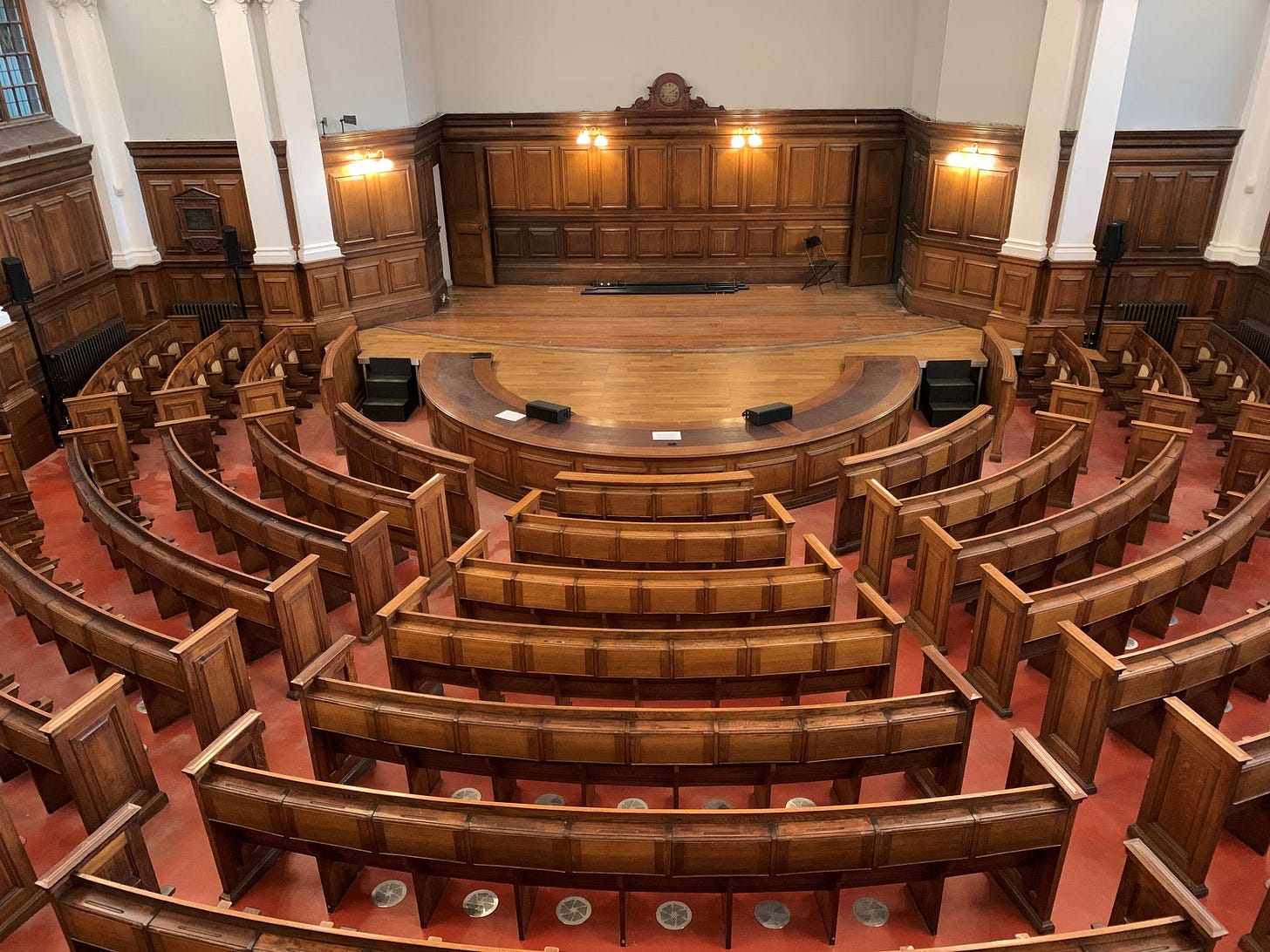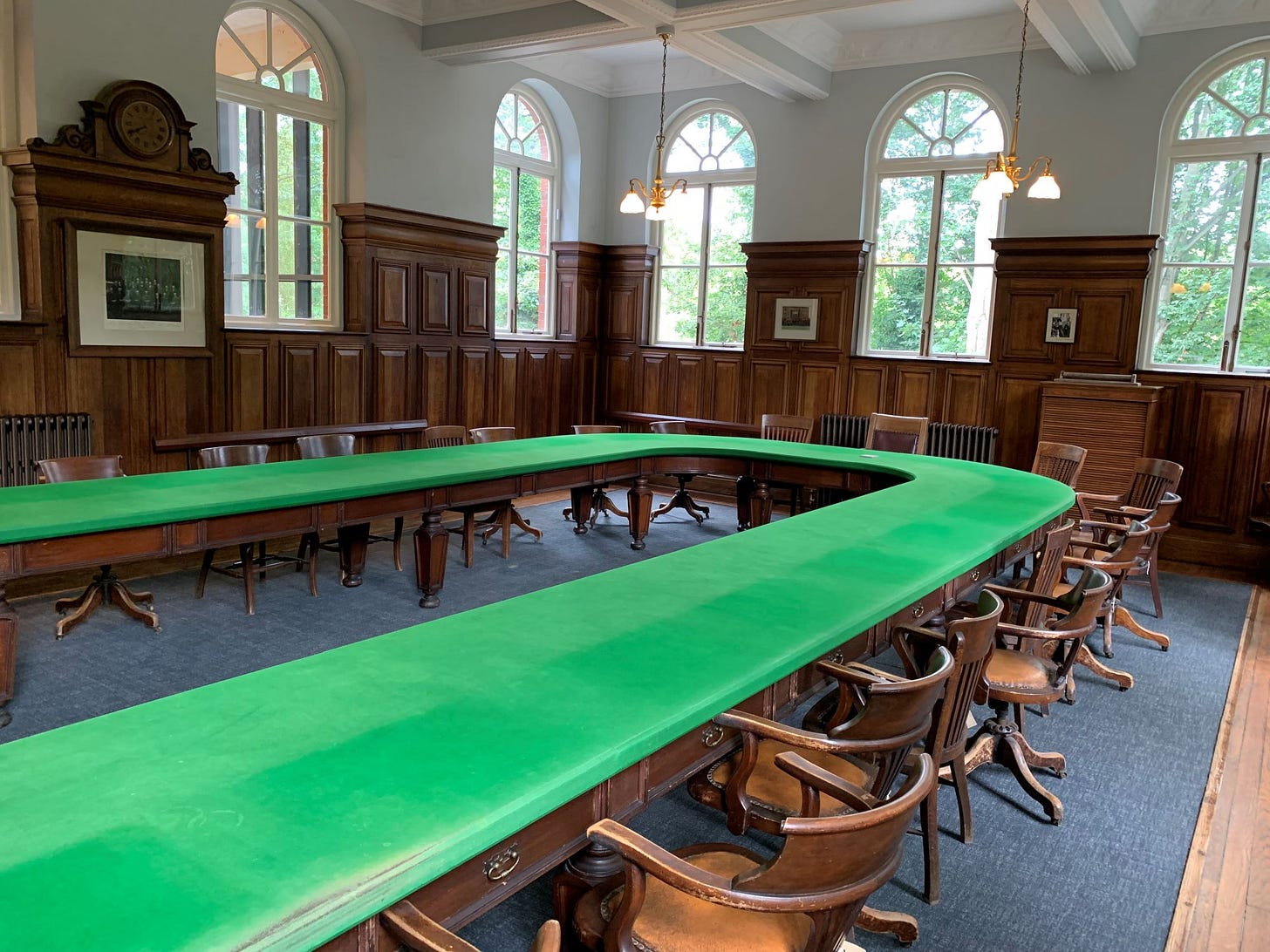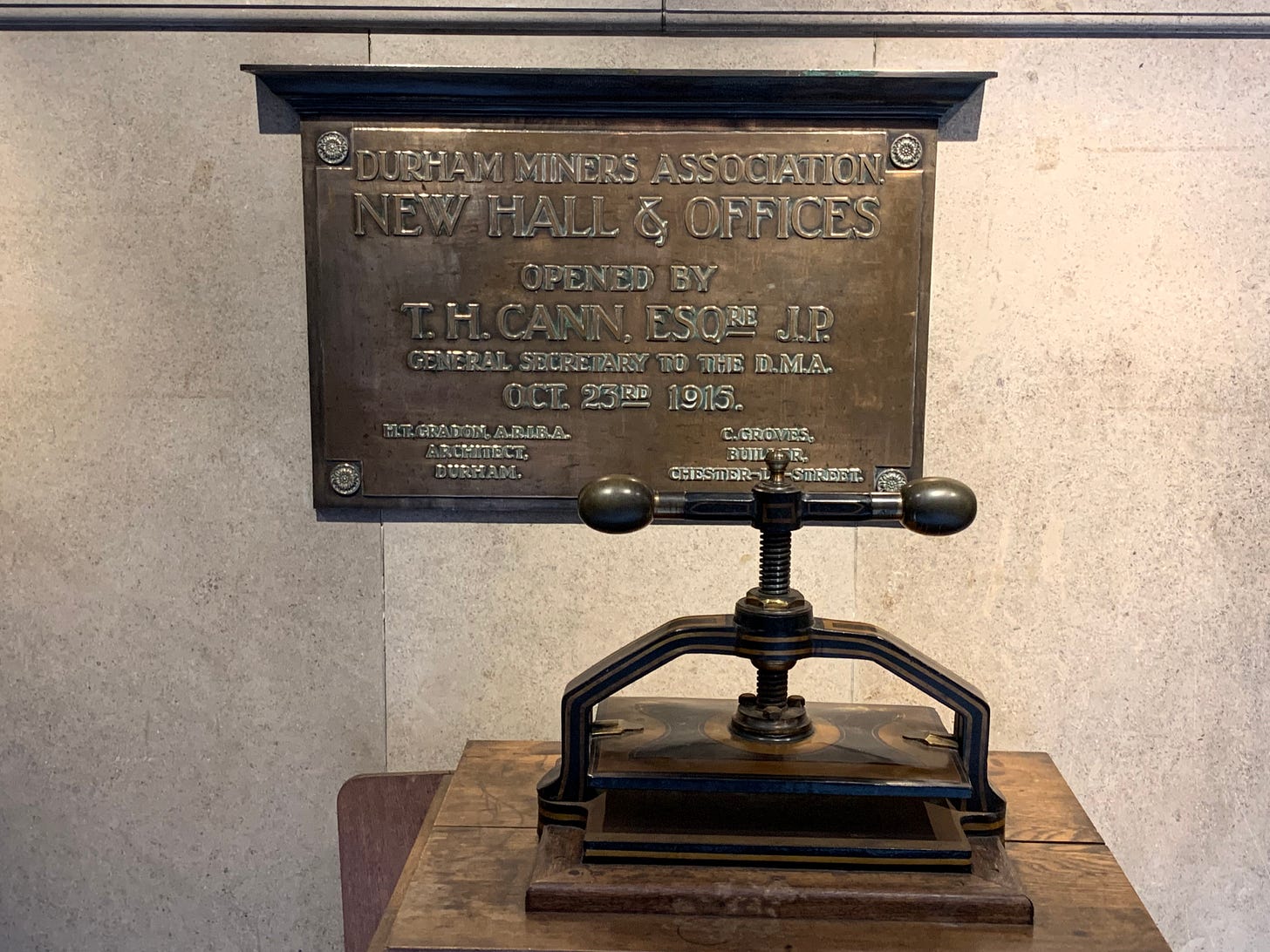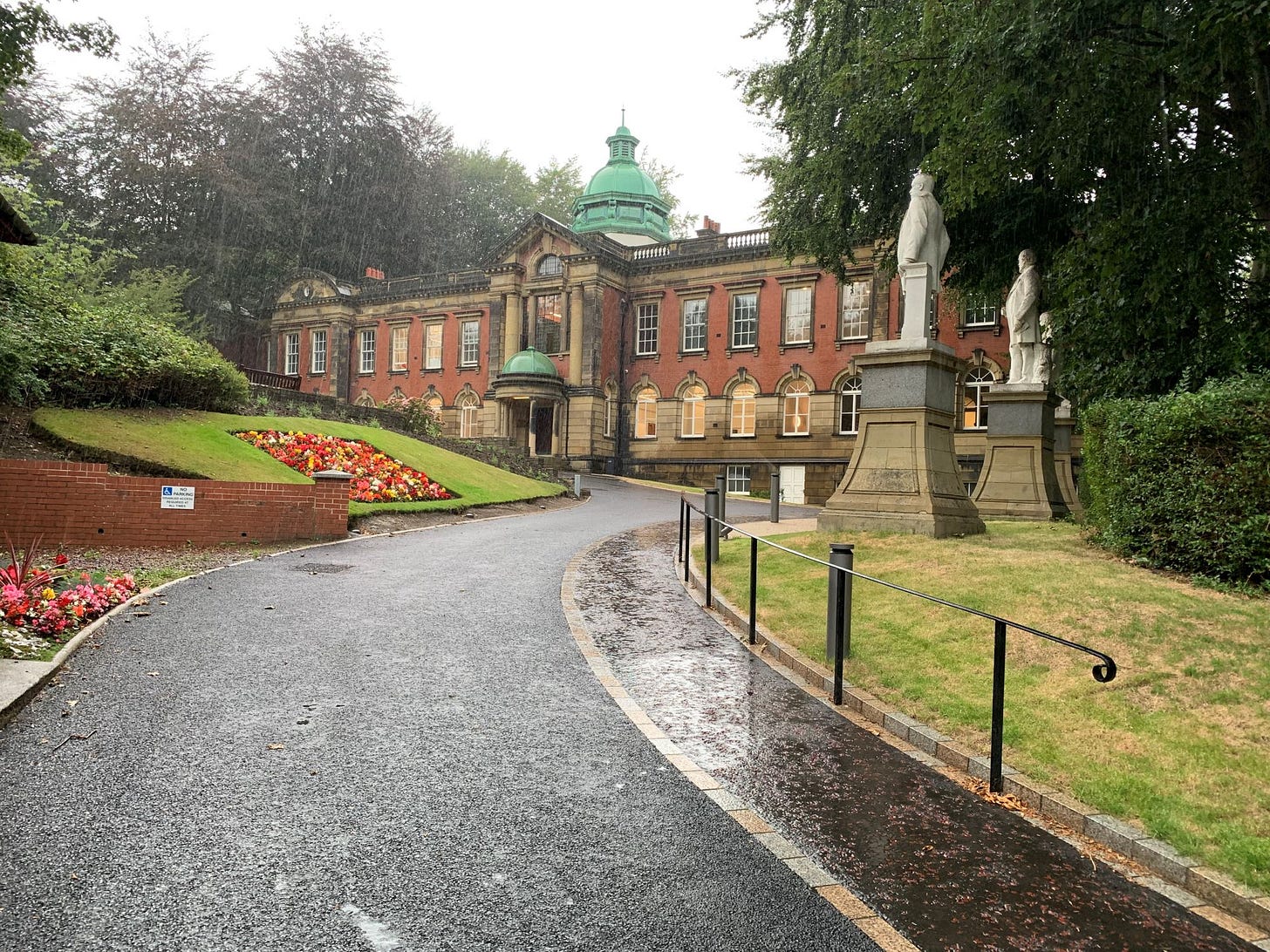The rebirth of Redhills - home of The Pitman's Parliament
A look inside Durham's secular 'cathedral'
In a wide-ranging public consultation about the future of Redhills, many people referred to it as “Durham’s other cathedral” – although they were all people who understood its significance.
This secular ‘cathedral’, its history tied up in bodily concerns rather than matters of the soul, can be seen from trains passing over the viaduct.
But its famously elevated and scene-stealing Norman counterpart has always commanded most rail passengers’ attention, thereby tending to define the outsider’s view of Durham.
Down below, Redhills nestles among trees at the end of a leafy lane, its purpose not immediately apparent.
“It’s a bit of a hidden building really,” agrees Andrew McIntyre, chief executive of Redhills CIO (charitable incorporated organisation).
“A lot more people have heard of Redhills than have been here but we aim to change that.”
After a £14 million restoration – including a new extension incorporating a new public entrance and modern function room – Redhills is opening up, not with great fanfare but with an escalating programme of events and guided tours to begin in the autumn.
Already it has hosted the BBC radio programmes Loose Ends and The Verb (the latter to be broadcast over Christmas). And there have been weddings, probably the first of many.
“It’s an amazing place to get married,” suggests Andrew.
Once on the threshold, the idea of Redhills being in any sense hidden seems ludicrous.
It is one massive architectural eyeful. Opened in 1915, when miners were making a mighty contribution to the war effort, it’s an example (take a bow, HT Gradon) of the style known as Edwardian Baroque.
Standing sentinel in the manicured grounds are four statues, not of work blackened miners with picks and safety lamps but of learned looking gents rendered in white marble.
“They were the guys who founded the Durham Miners’ Association,” I’m told. “They were Methodists.”
Their influence can be seen inside, in the debating chamber they call The Pitman’s Parliament which has always been the beating heart of Redhills.
It’s breathtaking, a symbol of democracy in action (and included in a Historic England compilation called A History of England in 100 Places, in the Power, Protest & Progress category along with the Palace of Westminster).
“This is unique,” Andrew tells me. “This place has literally helped to shape Britain.”
“The founders were Methodists and that’s why this looks like a Methodist chapel. That’s what they knew. The guy they got to design it (Mr Gradon, I presume) built chapels.
“You see, it’s not adversarial. It’s ‘in the round’ and every seat is numbered, each representing one pit. There are about 300 of them and the elected representatives of Horden, Pelton Fell or wherever would take their seats here.”
I’m jumping ahead a bit. In the Redhills entrance hall, Andrew had told me about the miners’ long and fierce battle to escape servitude and the penny-pinching ways of the pit owners.
Explosions, fires and roof falls often resulted in mass fatalities and are commemorated as pit disasters. But death was routine.
“We’ve got the minute books of the executive committee and every week the first standing item on the agenda was deaths,” says Andrew.
“They were young people mostly. There were big disasters but if you add the weekly death toll, it becomes many thousands.”
Early efforts to unionise were ruthlessly crushed but the miners were undaunted. Ultimately they got rid of the enslaving bond which miners, most of them illiterate, were forced to sign in order to get work.
Redhills is a magnificent symbol of them getting their own back, forming the powerful Durham Miners’ Association (DMA) and forcing the pit owners to improve safety underground.
“This was built as a statement of power,” says Andrew, pointing out the marble and Austrian oak.
“No expense was spared. This was akin to the kind of mansions the coal owners would have had – and the miners refused to negotiate with them anywhere except here. It was a case of, ‘You’re in our house now’.”
The Durham miners won a succession of reforms and became the best paid workers in the industrial world – and with subscriptions from DMA members also improved life above ground, funding aged miners’ homes, parks, sports facilities and welfare halls. Miners’ illiteracy was consigned to the past.
The DMA, with its ingrained principle of fairness, would accrue even greater influence, supplying county councillors and MPs from its ranks.
One fabulous relic of Redhills is the committee room with its horseshoe-shaped green baize table. If walls had ears…
But this is no relic, as Andrew stresses repeatedly. The pits may have gone but the principles live on – that sense of community not appreciated, surely, by the Thatcher government during the strike of 1984-5.
“When we did the public consultation, which was huge, we heard loud and clear from people: don’t put our history in a museum,” says Andrew.
“People said this is something living and real and it needs to be celebrated and practised.
“We were absolutely determined this would not be a mausoleum. It’s living heritage, something still happening right across the coalfield with choirs, brass bands and banner groups.
“So many people have stories and connections.”
A native of Durham, Andrew becomes emotional when recalling how his parents packaged up meals to feed mining families during the strike.
His mother was later chosen to appear on the groundbreaking women’s pit banner which was blessed in the cathedral, bonds between both institutions being close.
Pat McIntyre died eight years ago but is also commemorated on one of the engraved pit tokens that stud the undersides of the seats in The Pitman’s Parliament.
This was a fund-raising ploy to which many people responded.
And many people, when they visit this place, know – or are interested to find out – which number represented which pit, and they’ll go and sit in a particular one, taking a moment to reflect.
“The people who knew the building before will come in and say the place is exactly the same, which is successful heritage conservation,” says Andrew.
“But every single one of these seats was taken out, the floor was dug down to the bare earth and the roof has been completely re-done.
“The paint was peeling off so it’s all been beautifully restored and made good for another 100 years.”
The token money went into a fund swelled significantly by the National Heritage Lottery Fund, the DMA, the county council and other trusts and foundations, all invested in making this happen.
But the ambition of Redhills CIO, which took over the building from the DMA, extends beyond the building.
Andrew and the trustees hope to sustain the legacy of Redhills’ founders, bringing about improvements across the old Durham coalfield in housing, social welfare and energy supply (already they are looking to replicate Gateshead’s achievement in heating homes with mine water deep underground).
“We’re celebrating the whole mining culture here but we aim to be inspired by the resolutions passed here,” declares Andrew.
“There was one from Boldon Colliery where they asked the DMA to lend money for a new welfare hall.
“They built an enormous hall with a reading room, educational facilities, a theatre stage and sports facilities.
“It became such a centre of village life that they rapidly got the money back.
“Redhills operated like a kind of community investment bank. We’d like to do the same, so we’re looking to raise a serious amount of money to invest in the plans of local groups.”
In a world of hedge funds and absentee landlords, of external forces creating homelessness and unemployment, it’s a stirring prospect – communities seeing to their particular needs and looking after their own. Just as happened in the heyday of The Pitman’s Parliament.
Redhills is amazing and well worth a visit – and not entirely without a bit of 21st Century visitor attraction razzmatazz.
The new extension boasts a screening room done up to resemble a pit shaft where you can see a whizzy CGI film about mining life made by a games company, and with lines by a pitman poet spoken beautifully by County Durham actors Alun Armstrong and Gina McKee.
It’s worth keeping an eye on the Redhills website for forthcoming attractions, which include an event on September 6 (7.30pm) called Songs of the North East, featuring singers Graeme Danby and Valerie Reid and a screening of archive film In The Veins.
Guided tours – highly recommended – are due to begin in October which is also when an exhibition called Coal Face, featuring fabulous portrait photographs by Andy Martin, is due to open.
So a new era begins for Redhills – a building destined to be hidden no longer.




